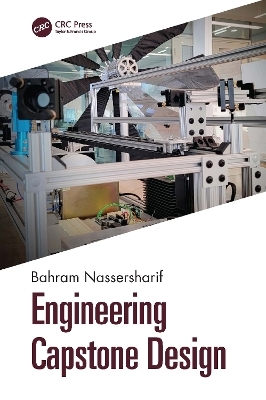
Engineering Capstone Design
CRC Press (Verlag)
978-0-367-62159-9 (ISBN)
Structured with a practical approach, Engineering Capstone Design guides engineering students to successfully manage capstone design projects. The book addresses the challenge of open-ended design projects, often in a team-based format, discussing team member roles, communication, and cooperation. It incorporates accreditation requirements and provides a modern framework for working with industry, reinforced by the inclusion of case studies.
Offers a structured process for capstone design, responsive to ABET accreditation requirements
Explains how to manage design projects under critical timelines and budgets
Covers essential topics and steps in a capstone design sequence, including defining, conceiving, presenting, prototyping, building, testing, and redesigning
Considers industry perspectives, as well as design competitions
Includes case studies for a look into industry experience
In addition to guiding engineering students conducting capstone design projects, this book will also interest industry professionals who are engaged in product development or design problem-solving.
Bahram Nassersharif is a Distinguished University Professor in the Department of Mechanical, Industrial, and Systems Engineering at the University of Rhode Island. He received his B.S. in Mathematics and Ph.D. in Nuclear Engineering from Oregon State University. He was the youngest graduate of Oregon State University in 2000 among the class of 3300 students. He was the youngest person to complete his Ph.D. in engineering in 1982. After a period at Los Alamos National Laboratory, he joined Texas A&M University (TAMU) as Assistant Professor and founding Director of the TAMU Supercomputer Center. He moved to the University of Nevada in 1991 as the Director of the National Supercomputing Center for Energy and the Environment and Professor of Mechanical Engineering. In 1997, he joined New Mexico State University as Professor and Department Head of Mechanical Engineering. He became Dean of Engineering at the University of Rhode Island in 2003. In 2007, he developed a new Capstone Design sequence in Mechanical Engineering. He has continuously taught the year-long design sequence since 2007. Professor Nassersharif is a recipient of the Presidential Young Investigator Award (1986) and a fellow of the AAAS. He is an ASME, ANS, IEEE, IEEE-CS, ACM, and AAAI member. His current research and teaching interests are in the areas of engineering design, modeling and simulation, nuclear systems, and space nuclear power and propulsion.
Phase I: Define, Conceive, Prototype, Prove. 1. Capstone Engineering Design. 2. Selection of Team Members for Design Projects. 3. Design Project Team. 4. Project Management. 5. Defining the Design Problem. 6. Conceiving Solutions. 7. Presenting and Receiving Critique. 8. Proof of Concept Design. 9. Documentation. Phase II: Build, Test, Redesign, Repeat. 10. Building from Proof of Concept Design. 11. Additional Considerations. 12. Testing Engineering. 13. Redesign. 14. 14.Closing out the Project and Documentation.
| Erscheinungsdatum | 13.06.2022 |
|---|---|
| Zusatzinfo | 6 Tables, black and white; 104 Line drawings, black and white; 6 Halftones, black and white; 110 Illustrations, black and white |
| Verlagsort | London |
| Sprache | englisch |
| Maße | 156 x 234 mm |
| Gewicht | 417 g |
| Themenwelt | Kunst / Musik / Theater ► Design / Innenarchitektur / Mode |
| Technik ► Bauwesen | |
| Technik ► Umwelttechnik / Biotechnologie | |
| Wirtschaft ► Betriebswirtschaft / Management ► Projektmanagement | |
| ISBN-10 | 0-367-62159-2 / 0367621592 |
| ISBN-13 | 978-0-367-62159-9 / 9780367621599 |
| Zustand | Neuware |
| Informationen gemäß Produktsicherheitsverordnung (GPSR) | |
| Haben Sie eine Frage zum Produkt? |
aus dem Bereich


